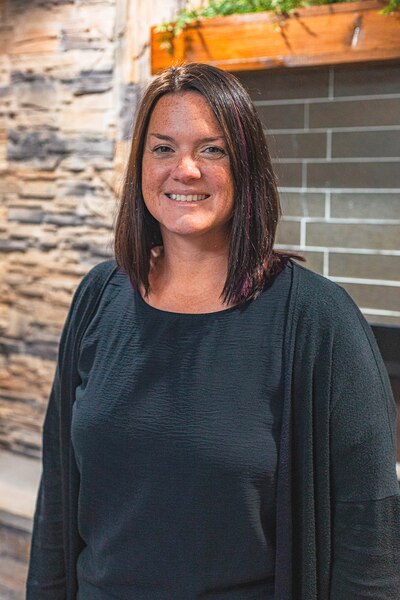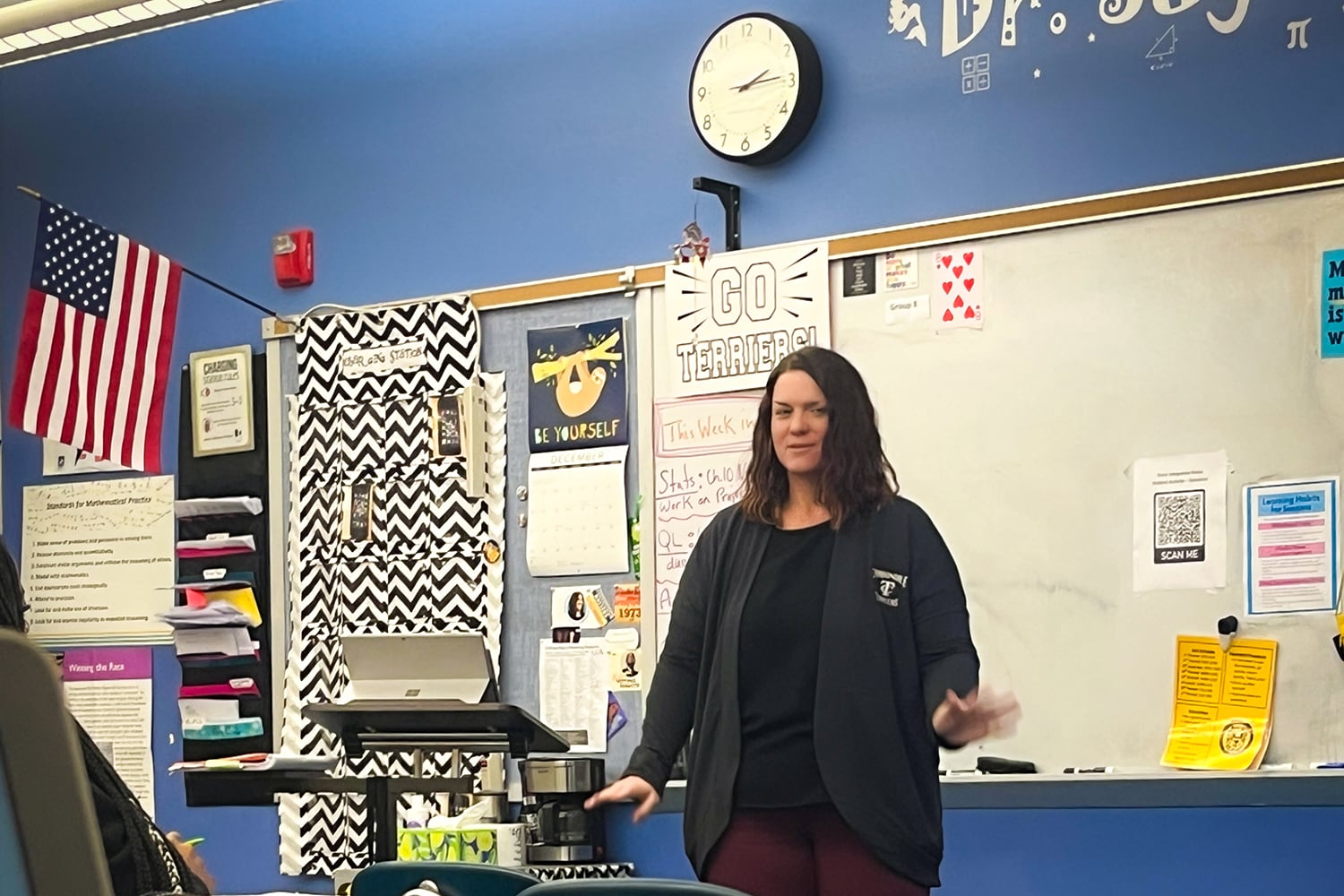Sign up for Chalkbeat Chicago’s free daily newsletter to keep up with the latest education news.
When Erin Sagaskie was a high school student, she often felt invisible. Now, as a high school math teacher, she does whatever she can to engage her students inside and outside of the classroom.
Sagaskie teaches math to juniors and seniors at Carbondale Community High School in Southern Illinois, where she’s taught for 19 of her 22 years in the classroom. While she teaches courses that students might not be jumping at the chance to take — statistics, Algebra II, and transitional math, including some dual-credit courses — she works hard to make her classes fun and relevant.
When she was a teen, Sagaskie said she didn’t like school even though she was a good student. She would go to school, get good grades, but she couldn’t participate in after-school activities because she needed to catch the bus back home as soon as school was over. She had friends, but they often weren’t in the same classes. The experience made her feel unseen.
“I don’t want kids to feel unseen, and that’s how I’ve gone about my career,” Sagaskie said.

This interview has been lightly edited for length and clarity.
How and when did you decide to become a teacher?
I was in high school when I decided to be a math teacher. I didn’t particularly like school, actually, but I realized that I liked a couple of things: I loved explaining math to other people, and I had a math teacher in 10th grade who looked like she was having a good time all the time. That was the first time I could say that I was having a good time in class. I was like “I can make money and be a math teacher. That’s a tangible goal.”
Why have you stayed a teacher over the past 20 years?
I’ve stayed invested in education in different ways. I have been involved in extracurricular activities with students. One year, I sponsored a junior class and ran a lot of concession stands. I’ve volunteered with students outside of the classroom. I worked on a college and career readiness program at a community college. Also, I’m always thinking about improving the classroom.
What’s your favorite lesson to teach and why?
My favorite types of lessons to teach are anything that uses real-world data and is relevant to what the kids are interested in. Recently in my Algebra II class, we were graphing parabolas. This one lesson was modeling when the McRib at McDonald’s will appear on the menu and for how many days. The question that students had to solve was “why?” But the lesson that I was teaching was about quadratic models. It was funny because around the time I was teaching the lesson, the McRib came back to McDonald’s menu, even though I didn’t plan that.
What’s something happening in the community that affects what goes on inside your classroom (or your school)?
The lack of universal broadband access is affecting kids all over the nation. I have two dual-credit classes I teach through the community college. The kids need to have internet access because all of the assignments are online. Carbondale is not a small town, but not everyone has access to high-speed internet. Some places can’t get any access. Also, all the COVID emergency funds will run out next year, so we can’t afford to give kids devices anymore. I think having the internet in every household is also just a fundamental right these days.
What’s one thing you’ve read that has made you a better educator?
I read multiple blogs from mathematics educators. I think that’s good because they’re current and you get to learn from teachers in different locations. I also follow social media groups for teachers to hear about their struggles and solutions in the classroom. You can get ideas from hundreds or thousands of teachers, and you don’t have to just stick to the teachers that are in your building or in your district.
Sometimes, I’ll be up at midnight reading a teacher’s blog on my phone and think “Oh, that’s really cool. I’m gonna try that in seventh period tomorrow.” I don’t have the details worked out at midnight, but I’m gonna do it in less than 24 hours anyway. Sometimes it works out great, and sometimes it doesn’t. But learning, even learning from failure, is how we grow as people.
How do you take care of yourself when you’re not at work?
I like being outside. It doesn’t matter if it’s hot in the summer or cold in the winter. I like taking long walks and riding bikes. I have two bikes, a mountain bike and a gravel bike. I like doing several bike races.
Samantha Smylie is the state education reporter for Chalkbeat Chicago covering school districts across the state, legislation, special education and the state board of education. Contact Samantha at ssmylie@chalkbeat.org.






